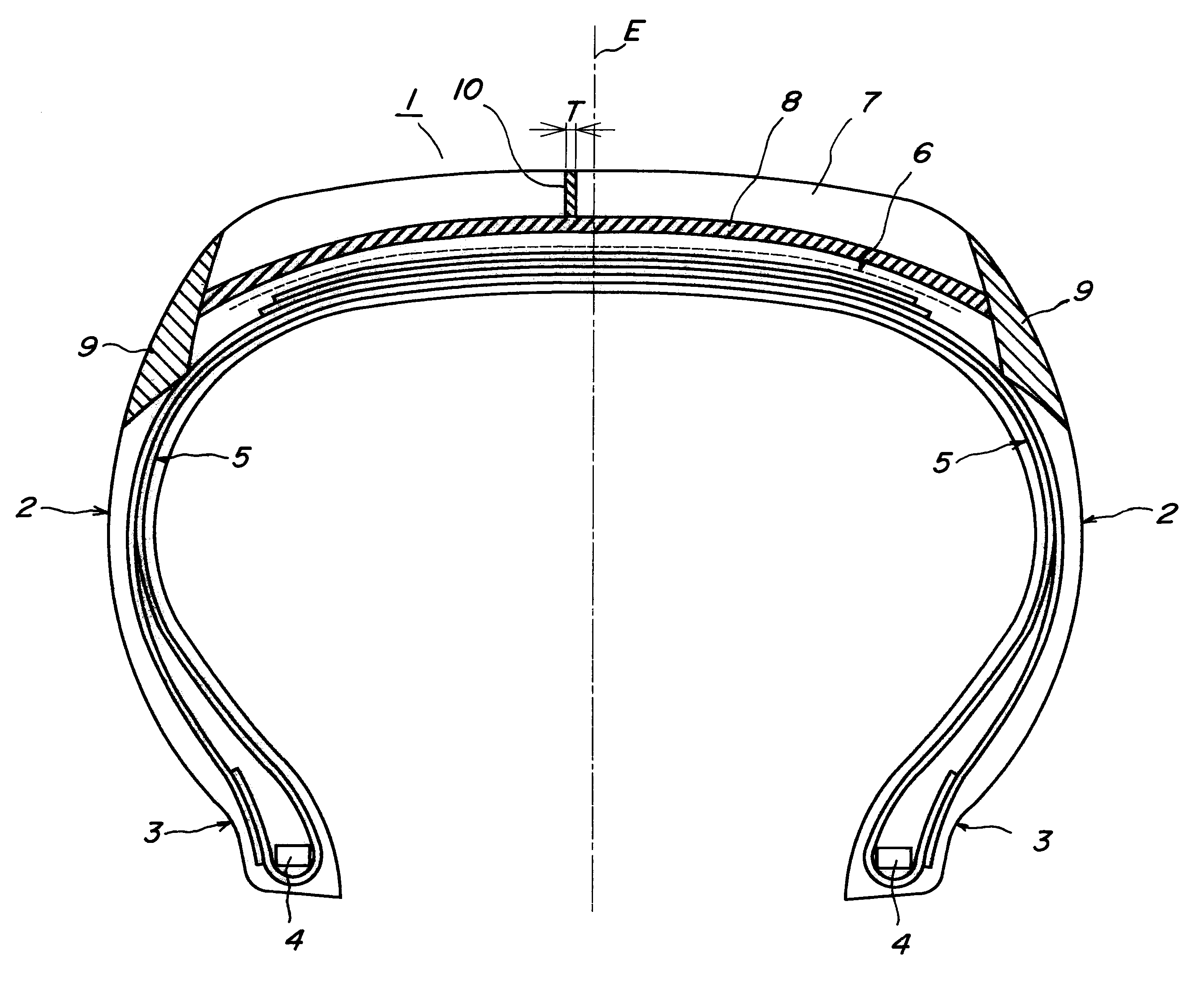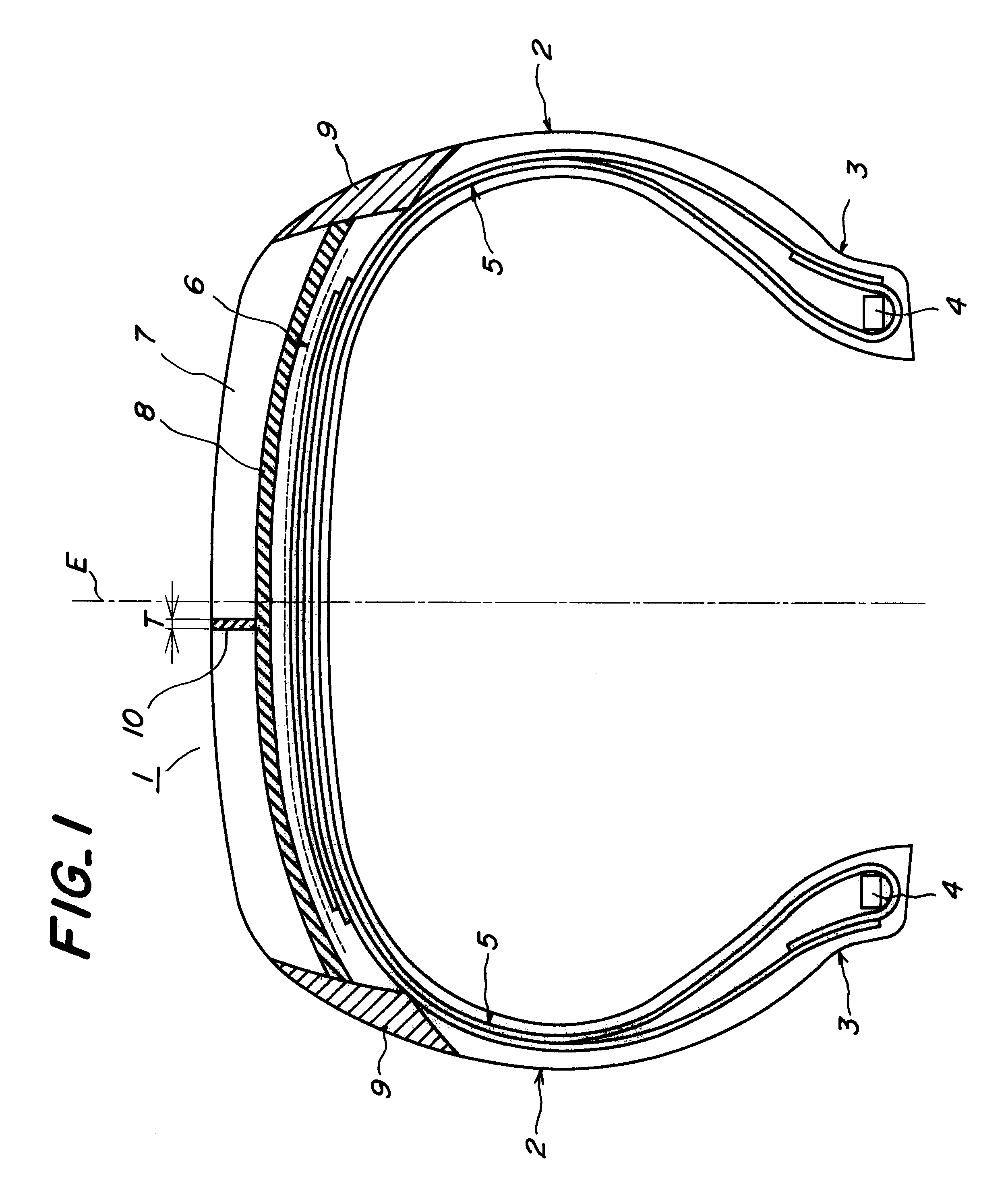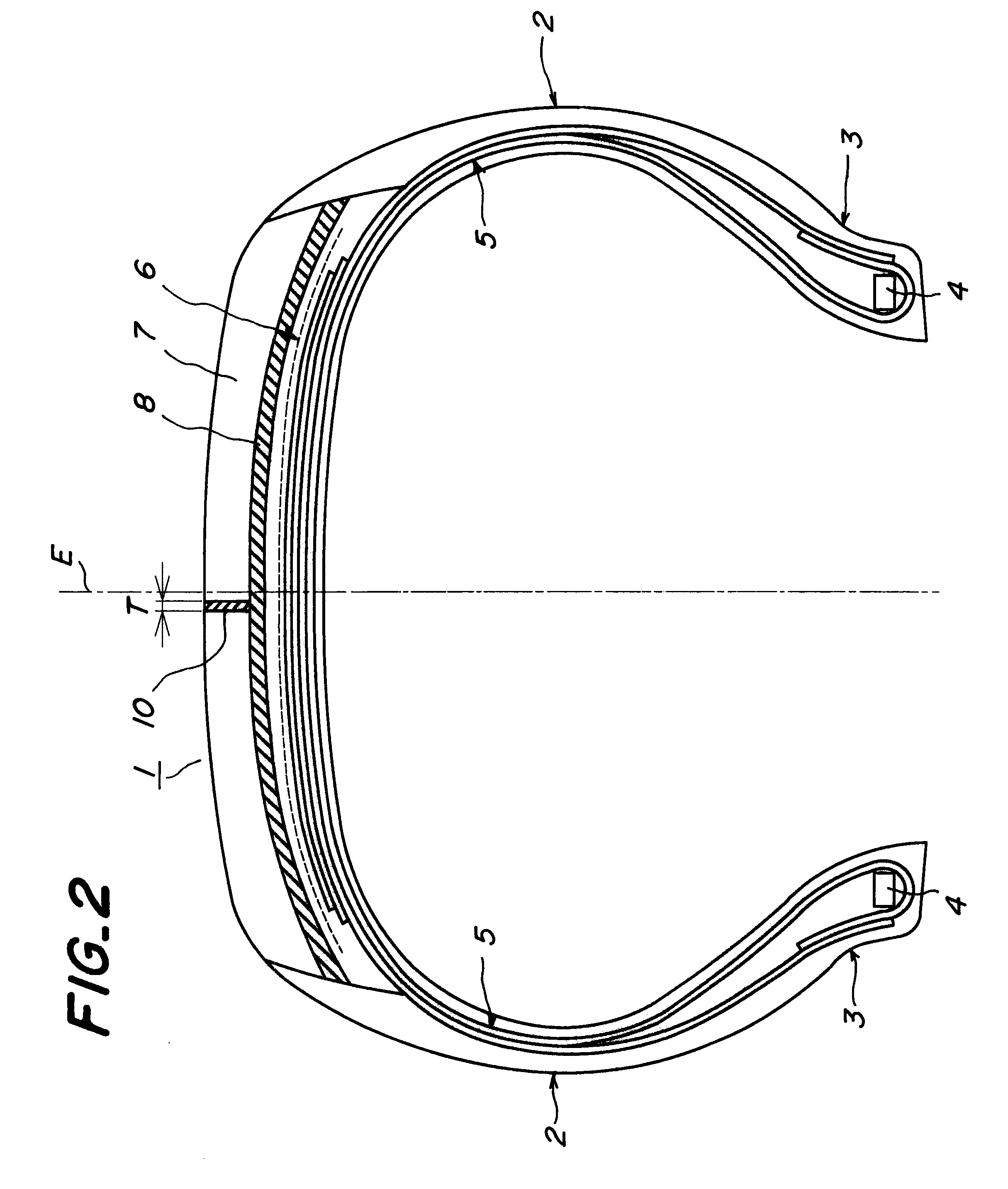Pneumatic tire having electrically conductive rubber layer in land portion defined between circumferential grooves
a technology of pneumatic tires and conductive rubber, which is applied in the direction of special tyres, vehicle components, non-skid devices, etc., can solve the problems of discharging static electricity in the entirety of the tire to the ground surface, noise to radio, sparks,
- Summary
- Abstract
- Description
- Claims
- Application Information
AI Technical Summary
Problems solved by technology
Method used
Image
Examples
Embodiment Construction
In the invention, the reason why the electrically conductive rubber layer is disposed in the region corresponding to 70% of the ground contact width of the new tire is based on the fact that since wearing of the shoulder portion or so-called shoulder wear is particularly and often caused on and after a middle stage of service life, even if the shoulder wear is caused, the electrically conductive rubber layer always contacts the road surface at the ground contact region. Further, the reason why the electrically conductive rubber layer does not cover the groove but extends in the tread rubber so as to sandwich both sides thereof in the widthwise direction between the tread rubbers is due to the fact that when the electrically conductive rubber layer is formed on the surface of the groove, it is cut out by wearing of the groove edge or stone-biting and does not contact the road surface on and after the middle stage of the service life.
In the invention, it is preferable that at least on...
PUM
 Login to View More
Login to View More Abstract
Description
Claims
Application Information
 Login to View More
Login to View More - R&D
- Intellectual Property
- Life Sciences
- Materials
- Tech Scout
- Unparalleled Data Quality
- Higher Quality Content
- 60% Fewer Hallucinations
Browse by: Latest US Patents, China's latest patents, Technical Efficacy Thesaurus, Application Domain, Technology Topic, Popular Technical Reports.
© 2025 PatSnap. All rights reserved.Legal|Privacy policy|Modern Slavery Act Transparency Statement|Sitemap|About US| Contact US: help@patsnap.com



